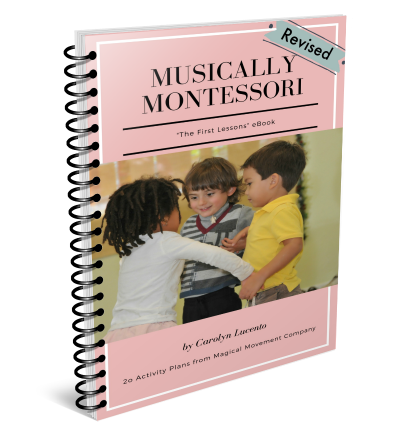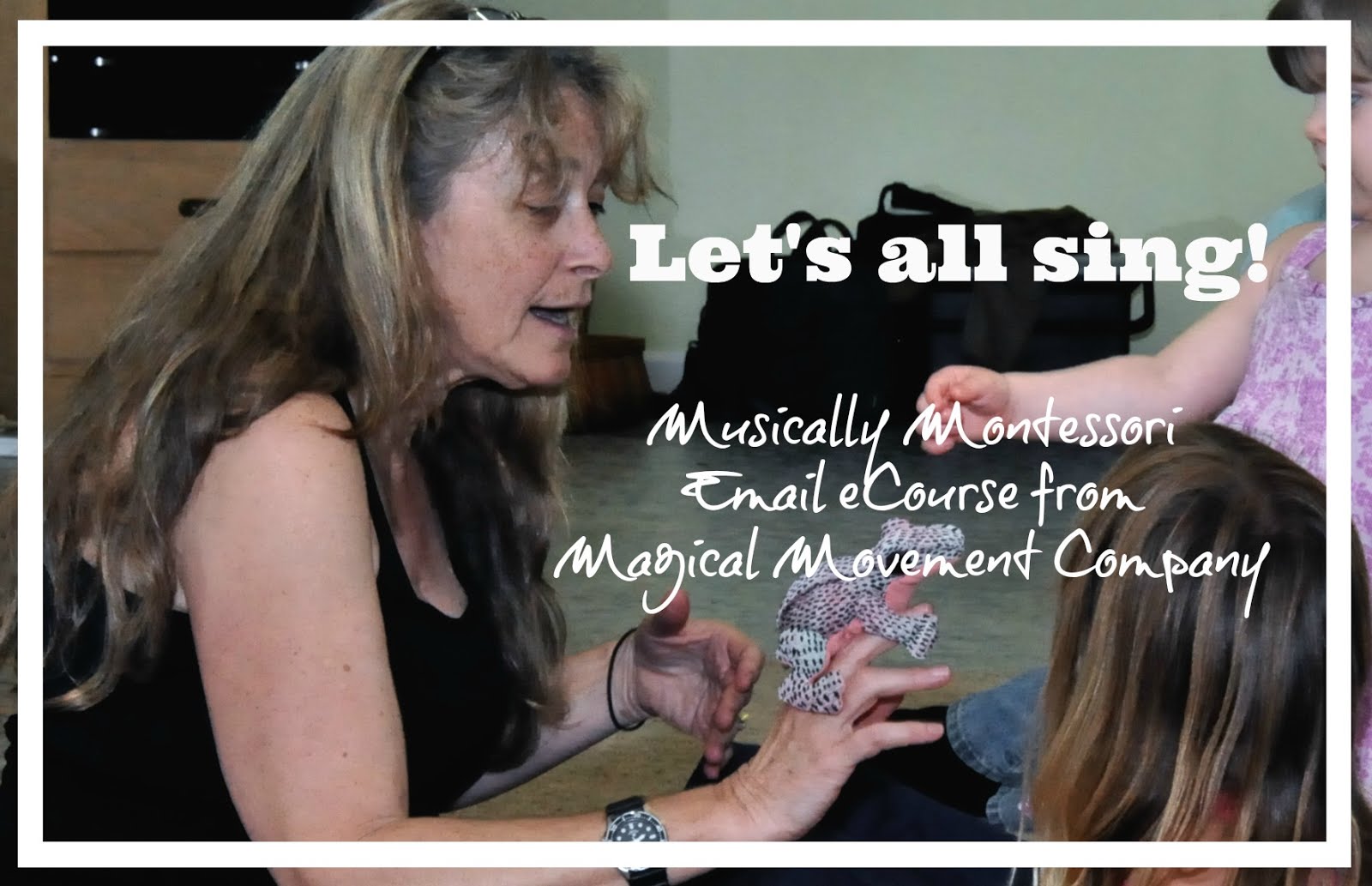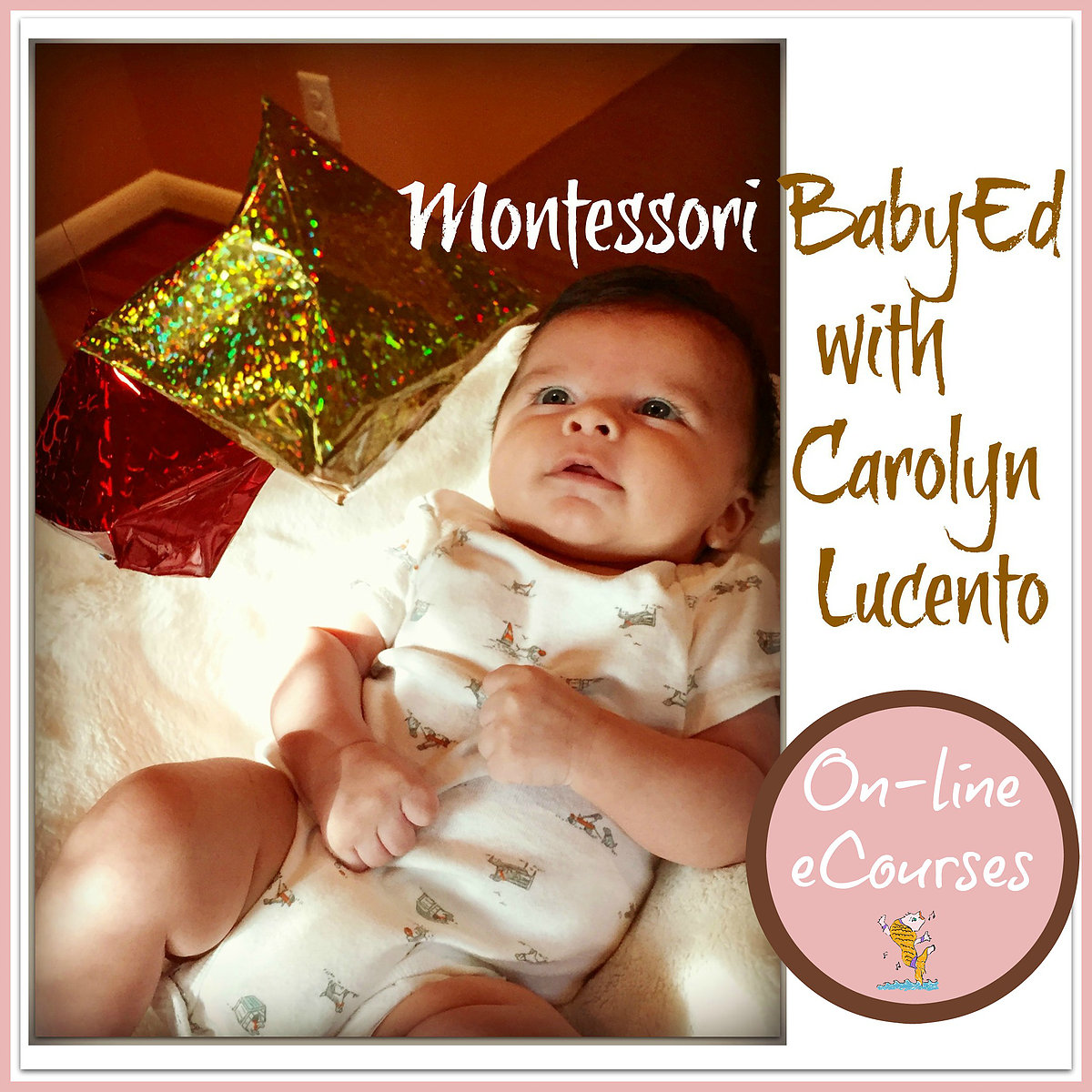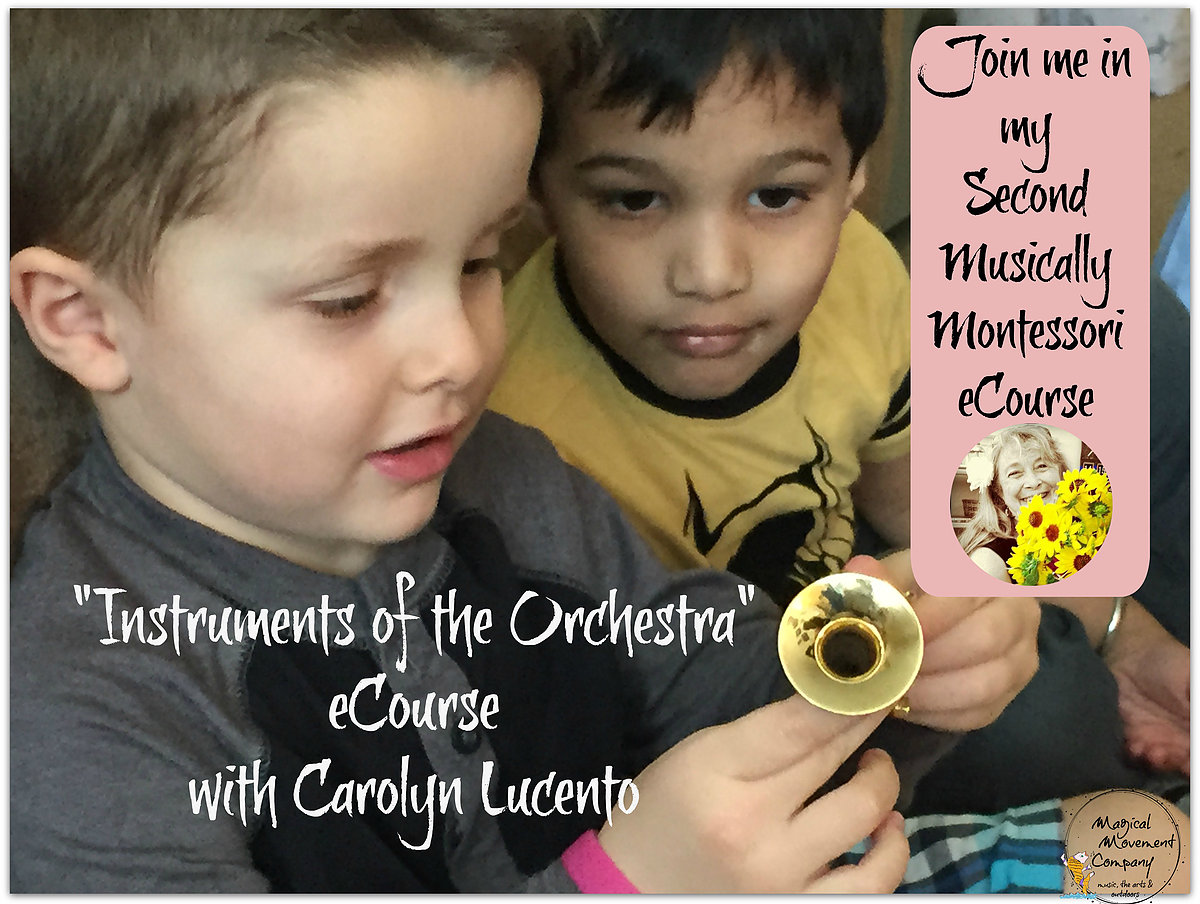LITTLE CHILDREN LOVE HEARING, SINGING & PLAYING LONG SUSTAINED NOTES AND QUICK SHORT NOTES IN MONTESSORI MUSIC CLASS! Leo Delibes' Sylvia Ballet Suite is a very expressive piece of music with contrasts for children to listen and move to.
Contrasts, or opposites, in music are always a great way to bring more musical understanding to young children. And, this piece of music is just right for contrasts! In Preschool music class, we've been having fun with moving on "tiptoe" for the short, choppy notes at the beginning of this fun music.
Then, we "glide" on the second part of the music that is more flowing with long, sustained notes. The children compare it to stepping up the ladder on the playground slide and then gliding down the slippery part of the slide.
Then the music returns to quick, "tiptoe moves" again! This contrast is easily recognized by the children.
I found a nice, short rendition of Delibes' Sylvia Ballet Suite on Youtube so you can listen and get an idea of how the children can really move to the contrasting parts of the music.
If you would like to expand this musical contrast activity there's a fun little singing warm up that presents playground "pitch maps" to children that you can see and hear on my post at this link: Preschoolers Sing with Pitch Maps.
After the children have enjoyed moving to this delightful music, it's fun to bring out the musical instruments to play "long, flowing notes" and then "short, choppy notes".
Several instruments work well for this activity. Triangles and finger cymbals can hold a sustained note as well as short, choppy ones.
One of my favorites for this activity is the woodblock/ guiro that is pictured below.
Advertising Disclosure: Magical Movement Company may be compensated in exchange for featured placement of certain sponsored products and services, or your clicking on links posted on this website. Thanks for your support!
View Post
Photos in this post are by the artists at Dollar Photo Club
Contrasts, or opposites, in music are always a great way to bring more musical understanding to young children. And, this piece of music is just right for contrasts! In Preschool music class, we've been having fun with moving on "tiptoe" for the short, choppy notes at the beginning of this fun music.
Then, we "glide" on the second part of the music that is more flowing with long, sustained notes. The children compare it to stepping up the ladder on the playground slide and then gliding down the slippery part of the slide.
Then the music returns to quick, "tiptoe moves" again! This contrast is easily recognized by the children.
I found a nice, short rendition of Delibes' Sylvia Ballet Suite on Youtube so you can listen and get an idea of how the children can really move to the contrasting parts of the music.
If you would like to expand this musical contrast activity there's a fun little singing warm up that presents playground "pitch maps" to children that you can see and hear on my post at this link: Preschoolers Sing with Pitch Maps.
After the children have enjoyed moving to this delightful music, it's fun to bring out the musical instruments to play "long, flowing notes" and then "short, choppy notes".
Several instruments work well for this activity. Triangles and finger cymbals can hold a sustained note as well as short, choppy ones.
One of my favorites for this activity is the woodblock/ guiro that is pictured below.
These can be purchased at this link: West Music (my favorite music supply store) or on Amazon as well.
After the children have explored this fun instrument for a few minutes, I show them how to make a longer lasting sound by scraping across it. Then we tap out shorter notes by tapping quickly and steadily.
You can play the Sylvia Ballet Suite again for the children and this time they can play along with their wood block/guiros. You can model how to play the short notes at the beginning of the piece by tapping on their instruments. Then when the second more flowing part of the song begins you can change to scraping with long strokes across their instruments.
Who can resist such a fun way to enjoy "ballet music"?!
I'm delighted that you are reading my post and hope that you get some ideas for fun music activities with your little ones. There are lots of quick little music learning videos at my website, too. Just click the link: Little Lesson Videos.
I always love hearing your ideas so feel free to leave a comment in the section below!
Advertising Disclosure: Magical Movement Company may be compensated in exchange for featured placement of certain sponsored products and services, or your clicking on links posted on this website. Thanks for your support!





































































